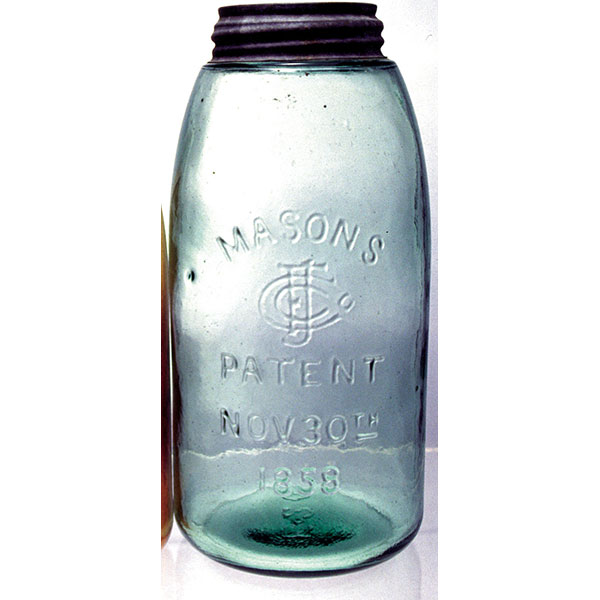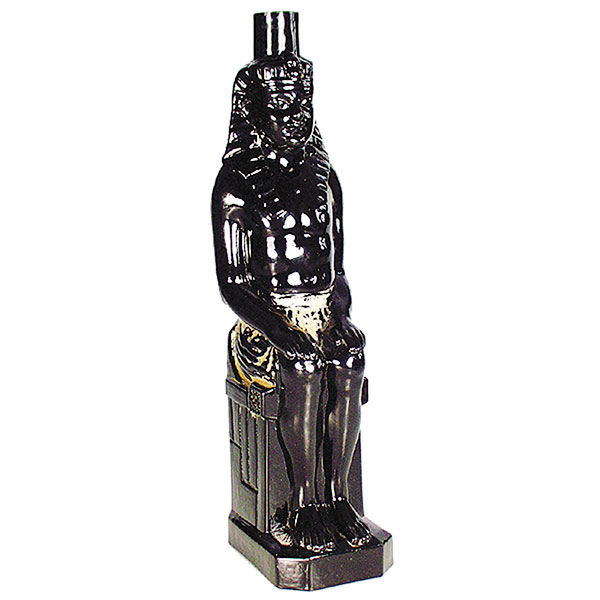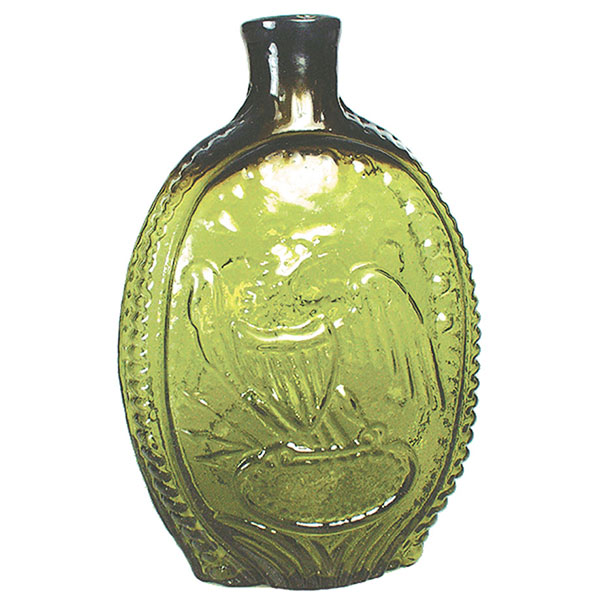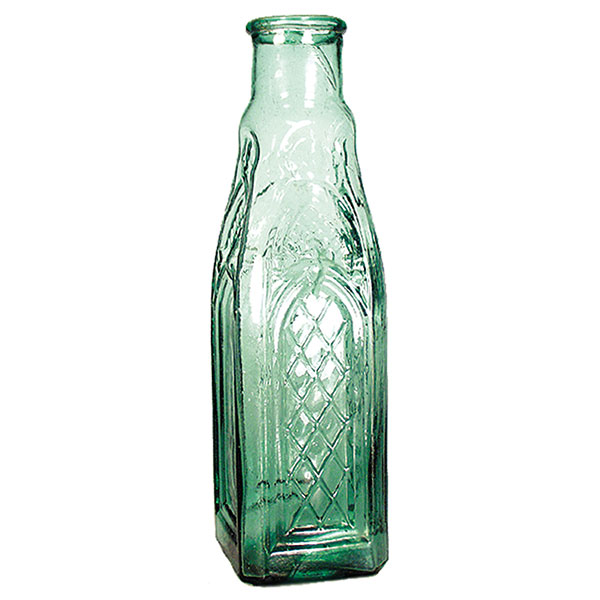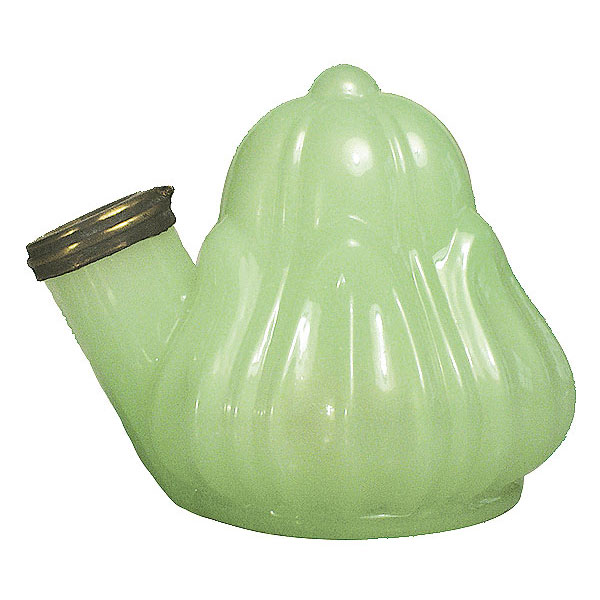Identification Guides
Bottle Types
The earliest bottles were free-blown by the glassmaker, then transferred to a pontil (also called a punty rod) for additional shaping. Free-blown bottles have a neck, a shaped body, a flattened base, and a mark or scar on the bottom called a pontil mark where the punty rod was removed. If the rough scar is ground smooth, it is called a ground pontil. Decoration, if any, is added by enameling or engraving, pattern molding, or even by applying glass adornments. Free-blown bottles have no mold seams, but may have some bubbles and imperfections. No two are exactly the same size.
Dip mold-blown bottles were uniform size for commercial use. Glass was blown into a hollow one-piece mold called a dip mold, and it took the shape of the mold’s interior. Many case and gin bottles were made this way.
By the early 1800s, hinged molds were used to create bottles. Early mold-blown bottles have seams on the sides where the pieces of the mold join, but not on the neck because each bottle was finished by hand.
Bottles made before 1900 may have irregular marks that look like the rough surface of whittled wood. Whittle marks were caused by hot glass touching the cold metal mold. This flaw usually indicates a nineteenth-century bottle.
Automatic bottling equipment was developed in 1903. Most bottles are now being made entirely by machine, and no handwork is necessary.
Four types of bottles were used before 1900: flasks and bottles that contained whiskey and other alcoholic beverages (both glass and ceramic), bitters bottles (the 1840-1900 types), household bottles (shoe polish, ink, canning jars, milk bottles, candy containers, perfumes, and other such household items), and figural bottles (any bottle with an unusual shape. The bottle may also be included in one of the other classifications.
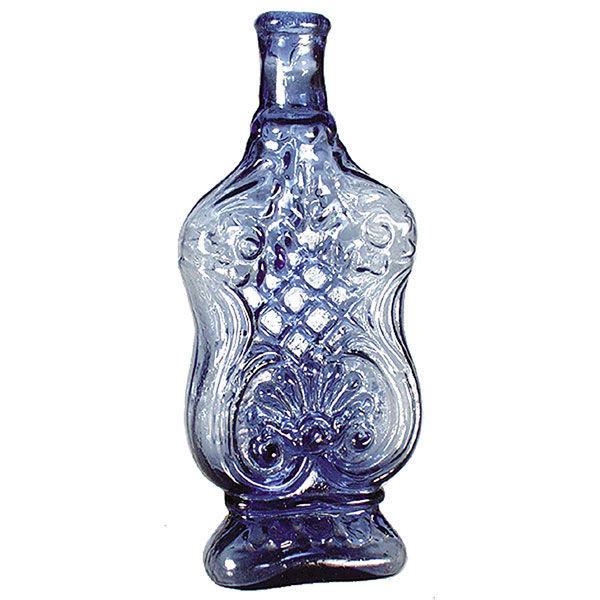 |
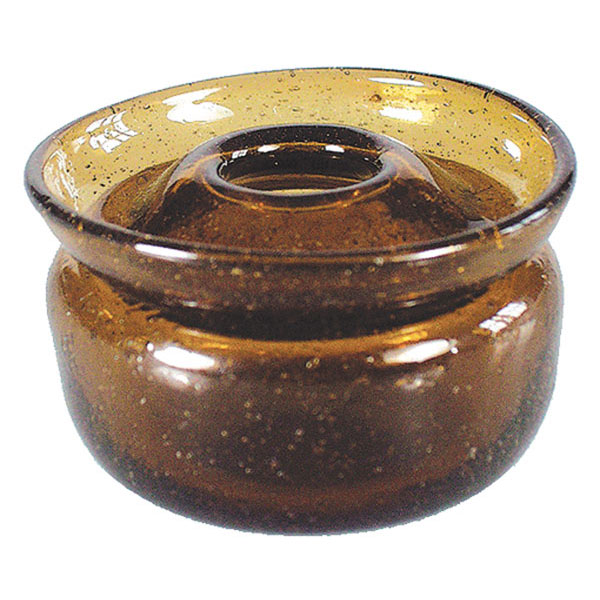 |
 |
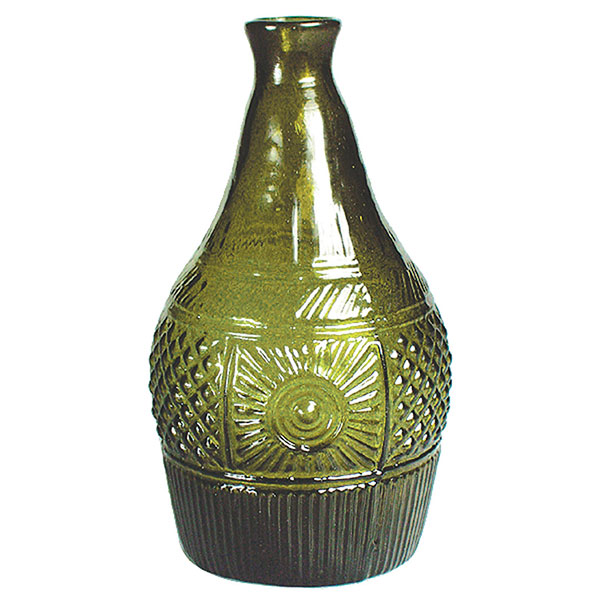 |
| Fancy cologne bottles were made in the United States from 1830s. This 5 5/8-inch blue bottle has an open pontil. | This free-blown inkwell has a pontil mark. It was probably made in Europe between 1830 and 1860. | Case gin bottles like this Dutch example were often made in a dip mold. This gin bottle was made about 1770 to 1800. | The pattern in the glass on this 6 3/4-inch-high American bottle was made by blowing the glass into a three-piece mold. |
